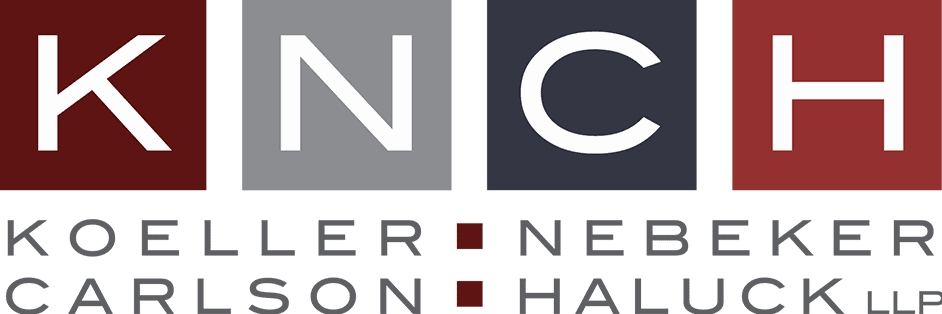Changes for the Worse? Two Recent Changes to Arizona’s Rules of Civil Procedure Are Likely to Tip the Scales Against Defendants in Civil Lawsuits
Authored by William A. Nebeker, Zahnie Soe Myint and Anne P. Barber
Rules of civil procedure govern how the legal process operates when a civil lawsuit is filed. They cover everything from how to officially begin a lawsuit, to fact finding and disclosure as the lawsuit proceeds, to how a trial is governed if the lawsuit gets that far.
Normally, changes to these rules are administrative and mainly impact lawyers. However, sometimes rule changes can impact clients. For example, when a rule is changed to require a client’s signature on a document or a client’s disclosure of certain information during litigation. But most of the time, changes to state and federal rules of civil procedure are only felt by lawyers and rarely impact litigation strategy.
But two recent changes to Arizona’s Rules of Civil Procedure aren’t your typical rule changes. The amendments to Rules 47 and 68 were implemented by the Arizona Supreme Court and went into effect on January 1, 2022. The changes to jury selection (Rule 47) and offers of judgment (Rule 68) will almost certainly impact litigation strategy by negatively affecting defendants in civil lawsuits, and their lawyers.
These changes were likely intended to level the litigation playing field so neither plaintiffs nor defendants could “game” the rules to their advantage. But as we discuss below, we are concerned the rules will heavily tip the playing field toward plaintiffs. If they do, defendants (and their lawyers) will be at a disadvantage from the moment a lawsuit is filed. They will also have more difficulty resolving that lawsuit in a favorable manner, even if they are on stronger factual and legal footing than their adversaries.
Arizona’s amended civil jury selection rule will allow biased jurors to serve on juries
Peremptory challenges allow lawyers to dismiss potential jurors without giving a reason. Lawyers may also dismiss potential jurors for cause, such as a juror who knows the plaintiff or is employed by the defendant. But peremptory challenges give lawyers more latitude to dismiss potential jurors who, based on their answers to questions during jury selection, signal a bias that would make that juror more likely to decide the case in favor of a particular party.
Though lawyers cannot use peremptory strikes to intentionally discriminate against minorities, research suggests peremptory strikes are used disproportionately against minorities as part of an effort to exclude them from jury service in criminal trials, particularly when minorities are on trial for alleged criminal acts. Cognizant of the racial basis that may sometimes fuel peremptory challenges, the Arizona Supreme Court amended Arizona Rule of Civil Procedure 47, “Jury Selection; Juror Information; Voir Dire; Challenges,” to do away with peremptory challenges. With that change, Arizona is the first state in the U.S. to prohibit peremptory challenges.
While it is vitally important to ensure that minorities are represented on juries and not discriminated against in the selection process—a concern that is more likely to arise in criminal cases than in civil cases—this rule change does more than just attempt to end a form of racial injustice. It makes it more difficult for plaintiffs and defendants alike in civil cases to pick fair and impartial juries.
Without peremptory strikes, potential jurors will be selected if they claim they are impartial even though their backgrounds suggest otherwise or they refuse to tell the truth about their biases. This will allow biased jurors to serve on juries and perhaps hijack deliberations and steer other jurors toward the party they are biased toward.
As with the change to Rule 68 which we discuss below, this change to Rule 47 is more likely to harm defendants in civil litigation. Trial judges, wanting to get a jury empaneled, will be less than accommodating to detailed voir dire questioning by defense lawyers and more likely than not accepting of a juror’s promise to “follow the law as instructed.” We can foresee many variations of juror number 13 admitting their mother was treated unfairly by Big Bank ABC or Corporation XYZ but being left on the jury because they promise to set those facts aside and only decide the case by the facts presented during trial. How comforting for the trial lawyer and client.
With the new selection process, there now exists the strong possibility of a pro-plaintiff jury. This will affect a lawsuit throughout the litigation. Settlement discussions will be colored by the fact that the plaintiff is more likely to get a more favorable jury for no other reason than the trial would take place without the ability to remove potentially biased jurors. Knowing the odds of getting a sympathetic jury are in their favor, plaintiffs and their lawyers will demand higher settlement amounts because they know the defense is less likely to obtain a favorable jury and, ultimately, a favorable verdict.
Arizona’s amended offer of judgment rule will open the floodgates to frivolous lawsuits
Arizona Rule of Civil Procedure 68, “Offer of Judgment,” was enacted to encourage parties to a lawsuit to promptly settle and avoid drawn-out and expensive litigation. The rule allows any party in a lawsuit to serve on any other party an offer to allow judgment to be taken against it which would end the lawsuit.
When a party served an offer of judgment on the other party under the old Rule 68, the recipient would have needed to think long and hard about the strength of its case and the reasonableness of the amount of damages it was seeking. It needed to balance the risks and expense of continued litigation against the likelihood of success at trial. That’s because there was a real penalty when a party rejected an offer of judgment under the old rule and did not obtain a more favorable verdict in the case. The penalty under the old Rule 68 was that the party that rejected the offer had to pay the other party’s expert witness fees and double the taxable costs the other party incurred after the date the offer of judgment was made. The penalty also included interest on certain types of damages that began accruing on the date the offer was made.
This penalty was quite a deterrent because in some types of lawsuits, expert witness fees and costs (such as the fees for producing transcripts of depositions, hearings, and trial proceedings) could easily tally in the six figures—and that’s before the costs were doubled. Therefore, the party on the receiving end of the offer of judgment had to consider whether the damages it thought it could recover were not only more than what was being offered, but also more than the amount of a potential penalty.
Because the penalty was tied to actual costs and not the amount of any recovery, plaintiffs had real “skin in the game” because they could be on the hook for the other side’s witness fees and double costs if they recovered no damages. This helped dissuade plaintiffs and their lawyers from filing frivolous lawsuits. Defendants and their lawyers could dare plaintiffs and their lawyers to reject offers of judgment for $1, $100, $1,000, or even $10,000. If they did, and their case was a loser, they’d be on the hook for multiples of that in the form of Rule 68’s penalties.
But new changes to Rule 68 have done away with that penalty. Now, Rule 68’s “penalty” is a flat amount: 20 percent of the difference between the amount of the offer of judgment and the amount of the final judgment or settlement. This revision allows plaintiffs and their lawyers to file frivolous lawsuits and reject offers of judgment in weak cases, which will lead to costly litigation. Even if plaintiffs lose their case, they will not face any real repercussions.
For example, a plaintiff could file a rather weak case, reject an offer of judgment for $1, $100, $1,000, or $10,000, and lose the case. Under amended Rule 68, the plaintiff will only be on the hook for $0.20, $20, $200, or $2,000, respectively. Those potential sanctions would be a small price for that plaintiff to pay. The effect of this will be to encourage plaintiffs to gamble that a defendant will decide to settle, regardless of the merits of a plaintiff’s case.
Now that Rule 68 ties its penalty to the difference between the offer of judgment and the final judgment or settlement, plaintiffs and their lawyers need not worry about the expert witness fees and overall costs that arise in their lawsuits. The amended rule incentivizes hail-mary-type lawsuits that will burden courts and force defendants to invest time and money defending groundless suits, while plaintiffs and their lawyers have very little to lose if their suits go nowhere.
Arizona’s amended Rules of Civil Procedure 47 and 68 are one step forward, two steps back
We have no doubt the Arizona Supreme Court had the best of intentions when it amended Arizona Rule of Civil Procedure 47. But in attempting to prevent the exclusion of minorities from jury service by doing away with peremptory challenges, the Court has opened the door to the increased chances of biased jurors serving on civil trials even though those jurors exhibited the potential for bias during jury selection.
Whatever the intention for the new Rule 68, the rule now effectively incentivizes plaintiffs and their lawyers to file frivolous lawsuits without fear of retribution. A defendant’s only recourse when sued in a meritless case is to offer its cost of defense, resulting in a windfall to the plaintiff.
As with all changes to rules of civil procedure, we will have to wait and see whether amended Rules 47 and 68 have the impact we believe they will. While we hope we are wrong about the rules’ potential impact on defendants and defense verdicts, we are not optimistic.
William A. Nebeker is a founding partner of Koeller Nebeker Carlson Haluck, LLP, based in the firm’s Phoenix office. His practice areas include Construction Litigation, Auto and Transportation Claims, Product Liability, Hospitality and Premises Liability, and Commercial Injury Claims and Litigation. He can be reached at nebeker@knchlaw.com.
Zahnie L. Soe-Myint is a partner with Koeller Nebeker Carlson Haluck, LLP, based in the firm’s Phoenix office. His practice areas include Construction Litigation, General Liability, Hospitality and Premises Liability, and Bodily Injury Defense, and has represented numerous insurance companies in coverage and bad faith matters. He can be reached at zahnie.soemyint@knchlaw.com.
Anne P. Barber is an associate with Koeller Nebeker Carlson Haluck, LLP, based in the firm’s Phoenix office. Her practice areas include Construction Litigation, Catastrophic Injury and Accident Litigation, Hospitality and Premises Liability, Insurance Coverage and Related Matters, and Business and Transaction Law. She can be reached at anne.barber@knchlaw.com.



